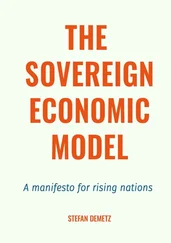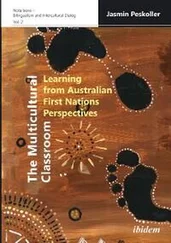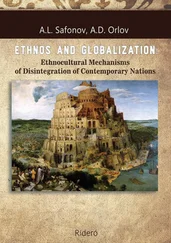1. When a man of the Hassan Ugaas is murdered by an external group twenty camels of his blood wealth (100) will be taken by his next of kin and the remaining eighty camels shared amongst all the Hassan Ugaas.
2. If a man of the Hassan Ugaas is wounded by an outsider and his injuries are valued at thirty-three-and-a-third camels, ten camels must be given to him and the remained to his jiffo-group (a sub-group of the diya group).
3. Homicide amongst members of the Hassan Ugaas is subject to compensation at the rate of thirty-three-and-a-third camels, payable only to the deceased’s next of kin. If the culprit is unable to pay all or part, he will be assisted by his lineage.
The heavy focus of the heer on killing and wounding reflects the almost constant state of warfare between diya-paying groups and clans. Central to this was blood wealth and blood feuding. A crime against a particular person was a crime against the whole diya-paying group, and necessitated collective compensation, blood wealth. If such blood wealth was not paid, the diya -paying group of the person who had committed the crime faced the collective retribution of the victim. When modern transportation reached Somalia, blood wealth was extended to people who were killed or injured in motor accidents. The Hassan Ugaas’s heer didn’t refer only to murder; clause 6 was “If one man of the Hassan Ugaas insults another at a Hassan Ugaas council he shall pay 150 shillings to the offended party.”
In early 1955, the flocks of two clans, the Habar Tol Ja’lo and the Habar Yuunis, were grazing close to each other in the region of Domberelly. A man from the Yuunis was wounded after a dispute with a member of the Tol Ja’lo over camel herding. The Yuunis clan immediately retaliated, attacking the Tol Ja’lo clan and killing a man. This death led, following the code of blood wealth, to the Yuunis clan offering compensation to the Tol Ja’lo clan, which was accepted. The blood wealth was to be handed over in person, as usual in the form of camels. At the handing-over ceremony, one of the Tol Ja’lo killed a member of the Yuunis, mistaking him for a member of the diya- paying group of the murderer. This led to all-out warfare, and within the next forty-eight hours thirteen Yuunis and twenty-six Tol Ja’lo had been killed. Warfare continued for another year before elders from both clans, brought together by the English colonial administration, managed to broker a deal (the exchange of blood wealth) that satisfied both sides and was paid over the next three years.
The paying of blood wealth took place in the shadow of the threat of force and feuding, and even when it was paid, it did not necessarily stop conflict. Usually conflict died down and then flared up again.
Political power was thus widely dispersed in Somali society, almost pluralistically. But without the authority of a centralized state to enforce order, let alone property rights, this led not to inclusive institutions. Nobody respected the authority of another, and nobody, including the British colonial state when it eventually arrived, was able to impose order. The lack of political centralization made it impossible for Somalia to benefit from the Industrial Revolution. In such a climate it would have been unimaginable to invest in or adopt the new technologies emanating from Britain, or indeed to create the types of organizations necessary to do so.
The complex politics of Somalia had even more subtle implications for economic progress. We mentioned earlier some of the great technological puzzles of African history. Prior to the expansion of colonial rule in the late nineteenth century, African societies did not use wheeled transportation or plow agriculture and few had writing. Ethiopia did, as we have seen. The Somalis also had a written script, but unlike the Ethiopians, they did not use it. We have already seen instances of this in African history. African societies may not have used wheels or plows, but they certainly knew about them. In the case of the Kingdom of Kongo, as we have seen, this was fundamentally due to the fact that the economic institutions created no incentives for people to adopt these technologies. Could the same issues arise with the adoption of writing?
We can get some sense of this from the Kingdom of Taqali, situated to the northwest of Somalia, in the Nuba Hills of southern Sudan. The Kingdom of Taqali was formed in the late eighteenth century by a band of warriors led by a man called Isma’il, and it stayed independent until amalgamated into the British Empire in 1884. The Taqali kings and people had access to writing in Arabic, but it was not used—except by the kings, for external communication with other polities and diplomatic correspondence. At first this situation seems very puzzling. The traditional account of the origin of writing in Mesopotamia is that it was developed by states in order to record information, control people, and levy taxes. Wasn’t the Taqali state interested in this?
These questions were investigated by the historian Janet Ewald in the late 1970s as she tried to reconstruct the history of the Taqali state. Part of the story is that the citizens resisted the use of writing because they feared that it would be used to control resources, such as valuable land, by allowing the state to claim ownership. They also feared that it would lead to more systematic taxation. The dynasty that Isma’il started did not gel into a powerful state. Even if it had wanted to, the state was not strong enough to impose its will over the objections of the citizens. But there were other, more subtle factors at work. Various elites also opposed political centralization, for example, preferring oral to written interaction with citizens, because this allowed them maximum discretion. Written laws or orders could not be taken back or denied and were harder to change; they set benchmarks that governing elites might want to reverse. So neither the ruled nor the rulers of Taqali saw the introduction of writing to be to their advantage. The ruled feared how the rulers would use it, and the rulers themselves saw the absence of writing as aiding their quite precarious grip on power. It was the politics of Taqali that kept writing from being introduced. Though the Somalis had even less of a well-defined elite compared with the Taqali kingdom, it is quite plausible that the same forces inhibited their use of writing and their adoption of other basic technologies.
The Somali case shows the consequences of the lack of political centralization for economic growth. The historical literature does not record instances of attempts to create such centralization in Somalia. However, it is clear why this would have been very difficult. To politically centralize would have meant that some clans would have been subject to the control of others. But they rejected any such dominance, and the surrender of their power that this would have entailed; the balance of military power in the society would also have made it difficult to create such centralized institutions. In fact, it is likely that any group or clan attempting to centralize power would not only have faced stiff resistance but would have lost its existing power and privileges. As a consequence of this lack of political centralization and the implied absence of even the most basic security of property rights, Somali society never generated incentives to invest in productivity-enhancing technologies. As the process of industrialization was under way in other parts of the world in the nineteenth and early twentieth centuries, Somalis were feuding and fending for their lives, and their economic backwardness became more ingrained.
ENDURING BACKWARDNESS
The Industrial Revolution created a transformative critical juncture for the whole world during the nineteenth century and beyond: those societies that allowed and incentivized their citizens to invest in new technologies could grow rapidly. But many around the world failed to do so—or explicitly chose not to do so. Nations under the grip of extractive political and economic institutions did not generate such incentives. Spain and Ethiopia provide examples where the absolutist control of political institutions and the implied extractive economic institutions choked economic incentives long before the dawn of the nineteenth century. The outcome was similar in other absolutist regimes—for example, in Austria-Hungary, Russia, the Ottoman Empire, and China, though in these cases the rulers, because of fear of creative destruction, not only neglected to encourage economic progress but also took explicit steps to block the spread of industry and the introduction of new technologies that would bring industrialization.
Читать дальше












